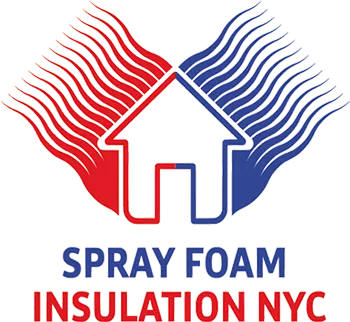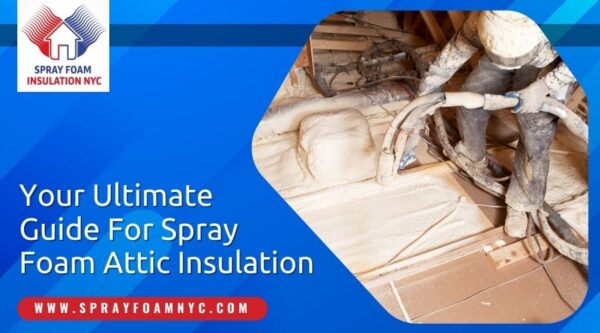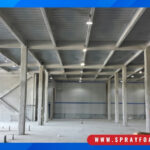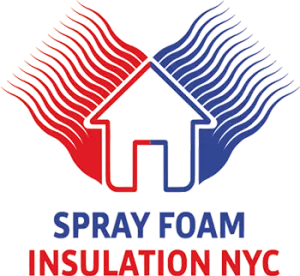When it comes to optimizing your home’s energy efficiency and comfort, spray foam attic insulation, often referred to as spray attic insulation, emerges as a game-changer. In this guide, we’ll dive into the ins and outs of this innovative insulation method. From understanding its benefits to grasping the installation process, we’ve got you covered.
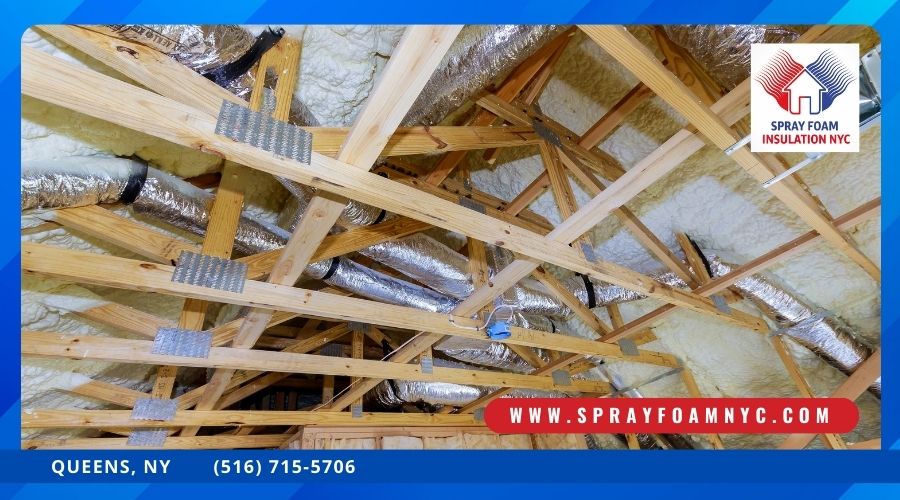
Understanding Spray Foam Insulation
Welcome to the heart of our guide, where we unravel the magic behind spray foam insulation. This section delves into the core concepts, helping you grasp the essence of this revolutionary method. Get ready to uncover the what, why, and how of spray foam insulation, and embark on a journey towards a cozier, more energy-efficient home.
What is Spray Foam Insulation?
Spray foam insulation is a cutting-edge solution that involves the application of a specialized foam material to the interior of your attic. This foam swiftly expands, filling every nook and cranny to provide an airtight seal that traditional insulation methods can’t match.
Types of Spray Foam Insulation
There are two main types: open-cell and closed-cell spray foam insulation. Open-cell foam is light and flexible, ideal for soundproofing and indoor applications. Closed-cell foam, on the other hand, is denser and boasts higher R-values, making it exceptional for exterior use and areas prone to moisture.
Advantages of Spray Foam Insulation
In this section, we’ll explore the multitude of benefits that spray foam insulation brings to the table. Say farewell to traditional insulation woes as we uncover the remarkable advantages that set spray foam apart. From unmatched insulation to moisture protection and noise reduction, you’ll soon see why this method shines bright in the world of home insulation. Say goodbye to drafts and chilly winters. Spray foam insulation offers a plethora of benefits:
Superior Insulation and Air Sealing
Spray foam’s expansive nature ensures that every crevice is sealed, preventing air leaks and maintaining a consistent temperature in your home. This results in not only energy savings but also a comfortable living environment year-round.
Moisture and Mold Prevention
The impermeable nature of closed-cell foam acts as a barrier against moisture, reducing the risk of mold growth and wood rot. With this added protection, your home remains shielded from potential structural issues caused by excess moisture.
Noise Reduction
Open-cell foam’s sound-absorbing qualities make it an excellent choice for minimizing noise transfer between rooms. Whether it’s loud footsteps or echoing voices, you can enjoy a quieter and more peaceful atmosphere within your living spaces.
How Does Spray Foam Insulation Work?
Prepare to dive deep into the science behind spray foam insulation. Here, we break down the intricate process of how this foam material transforms from liquid to solid, filling every crack and crevice along the way. By understanding the mechanics, you’ll gain a newfound appreciation for the efficiency and effectiveness that spray foam insulation brings to your attic. This insulation operates by expanding rapidly upon application, effectively filling gaps and spaces in your attic. It then solidifies, creating a durable barrier that keeps heat in during winter and out during summer.
Spray Foam Insulation R-Value
R-value measures an insulation material’s ability to resist heat flow. Closed-cell spray foam boasts a high R-value, indicating its exceptional insulating properties that help keep your home comfortable year-round.
DIY Spray Foam Insulation vs. Professional Installation
While DIY kits are available, professional installation is recommended for optimal results. Trained technicians possess the expertise to apply the foam evenly and in the right quantity, ensuring maximum efficiency and a seamless insulation outcome for your space.
Comparing Spray Foam to Other Insulation Types
Let’s talk comparisons. In this section, we’ll put spray foam insulation in the spotlight alongside its competitors: fiberglass and cellulose. We’ll dissect the key differences, benefits, and drawbacks of each option, giving you a comprehensive overview. By the end, you’ll be equipped with the knowledge to make an informed decision about which insulation type aligns best with your home’s needs.
Spray Foam vs. Fiberglass vs. Cellulose
Unlike traditional fiberglass and cellulose insulation, spray foam expands to create an airtight seal, minimizing energy loss. It also has a longer lifespan and requires less maintenance, making it a cost-effective choice in the long run.
Cost Considerations
Several factors influence the cost of spray foam insulation, including the size of your attic, type of foam, and labor charges. Although the upfront investment is higher than some traditional options, the long-term energy savings often outweigh the initial expense, ensuring a wise investment for your home’s future.
Longevity of Spray Foam Insulation
With proper installation and maintenance, spray foam insulation can last for several decades. Unlike other materials, it doesn’t sag or settle over time, ensuring consistent performance and insulation benefits throughout its lifespan.
Enhance Your NYC Home with Spray Foam Insulation
Spray foam attic insulation is a transformative investment that pays off in energy savings, comfort, and durability. By choosing this advanced insulation method for your attic insulation in New York, you’re making a smart move towards a more efficient and comfortable home in the Empire State.
Ready to transform your New York City dwelling into a haven of comfort and energy efficiency? Embrace the power of spray foam insulation and experience the difference it makes. Say goodbye to drafts, high energy bills, and discomfort. Contact us today to schedule a consultation and take the first step towards a cozier, more cost-effective home in the heart of the Big Apple.
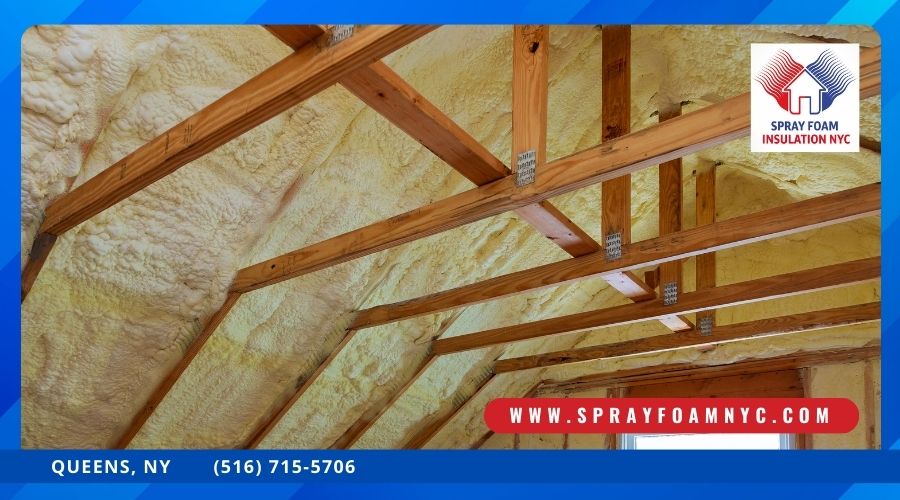
Frequently Asked Questions
Is spray foam insulation suitable for all types of attics?
Spray foam can be applied to various attic types, including sloped and flat roofs, as well as unconventional spaces. However, due to the unique characteristics of each attic, consulting a professional for an assessment is advisable. They can provide tailored recommendations based on your attic’s specific needs and layout.
Can I install spray foam insulation myself, or should I hire a professional?
While DIY spray foam insulation kits are available, it’s essential to consider the complexity of the installation process. Achieving proper insulation and a consistent application requires specific skills and equipment. Hiring a professional ensures not only even coverage but also maximum efficiency, as they are experienced in handling the nuances of the material.
Does spray foam insulation help with soundproofing between floors?
Absolutely. Open-cell spray foam insulation’s ability to expand and fill gaps effectively makes it an excellent choice for reducing noise transfer between floors. By sealing off air pathways, it minimizes the transmission of airborne sounds, creating a quieter and more peaceful indoor environment.
What’s the typical lifespan of spray foam insulation?
With proper maintenance and care, spray foam insulation can have a lifespan of 30 years or more. Unlike traditional insulation materials that may settle or degrade over time, spray foam maintains its integrity, providing consistent thermal and air sealing performance throughout its lifespan. Regular checks and addressing any potential issues promptly can help prolong its effectiveness.
How does the cost of spray foam insulation compare to other options?
While the initial cost of spray foam insulation is higher compared to traditional options like fiberglass or cellulose, it’s crucial to consider the long-term benefits. Research indicates that residences utilizing spray foam insulation can experience energy reductions of as much as 50% when compared with conventional insulation alternatives, as highlighted in an article by Amazing Architecture. Additionally, its longer lifespan reduces the need for replacement, making it a cost-effective choice in the long run.
